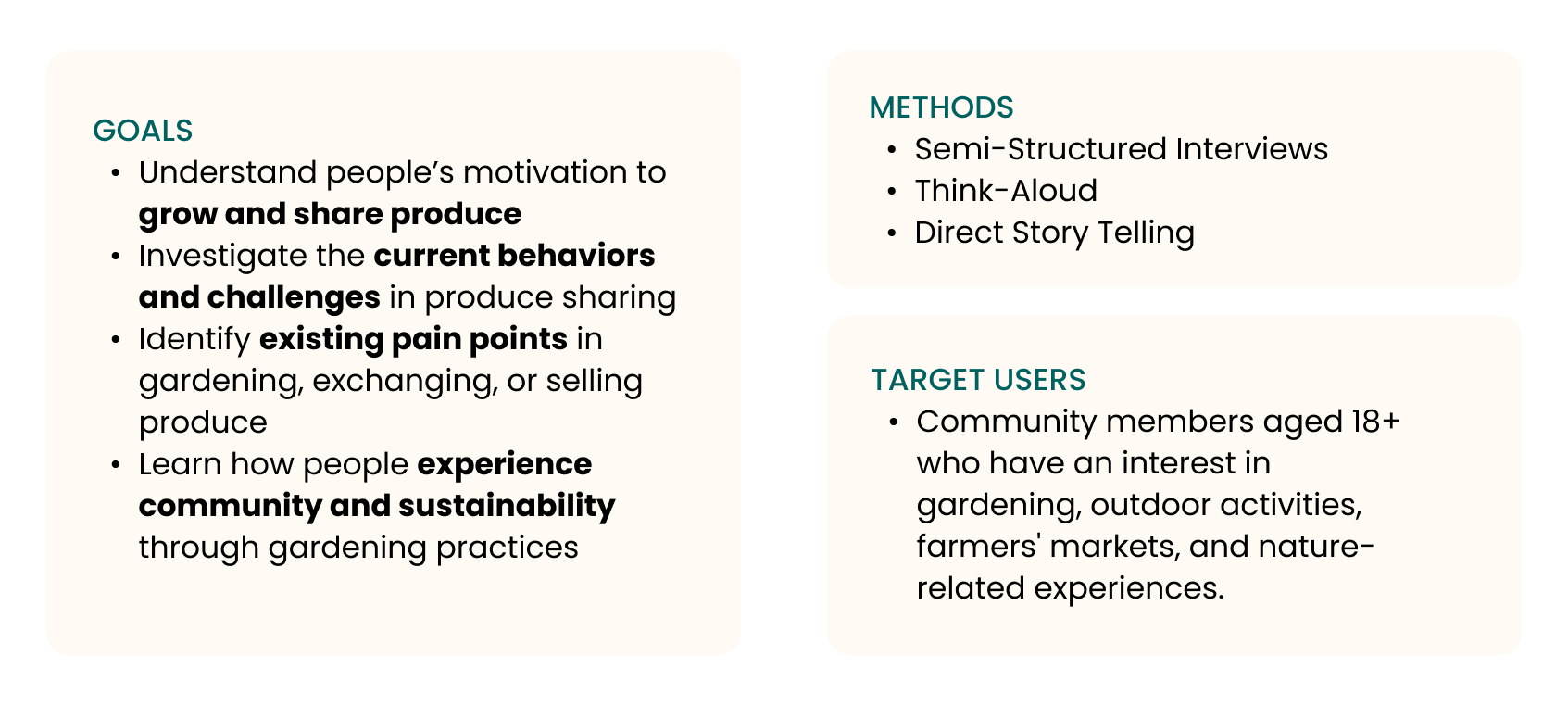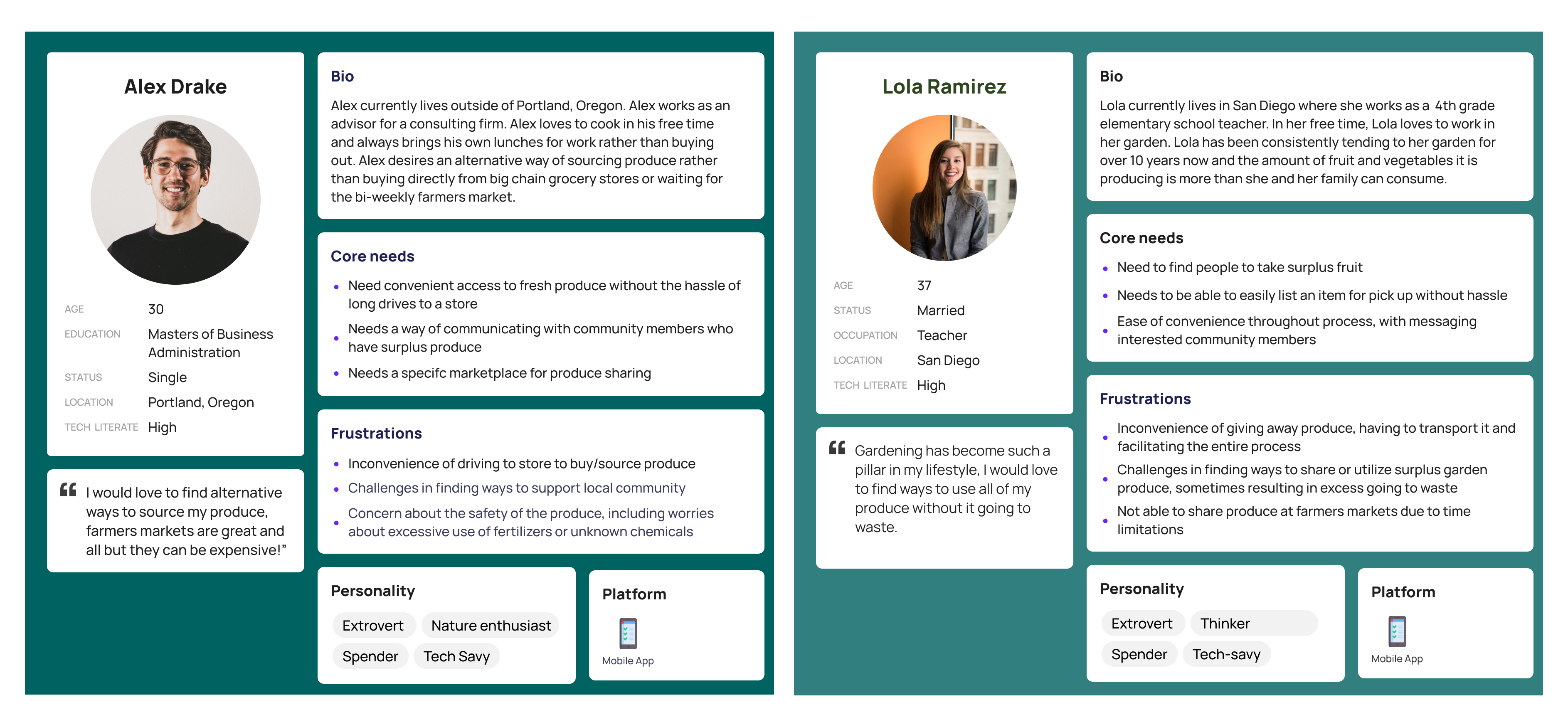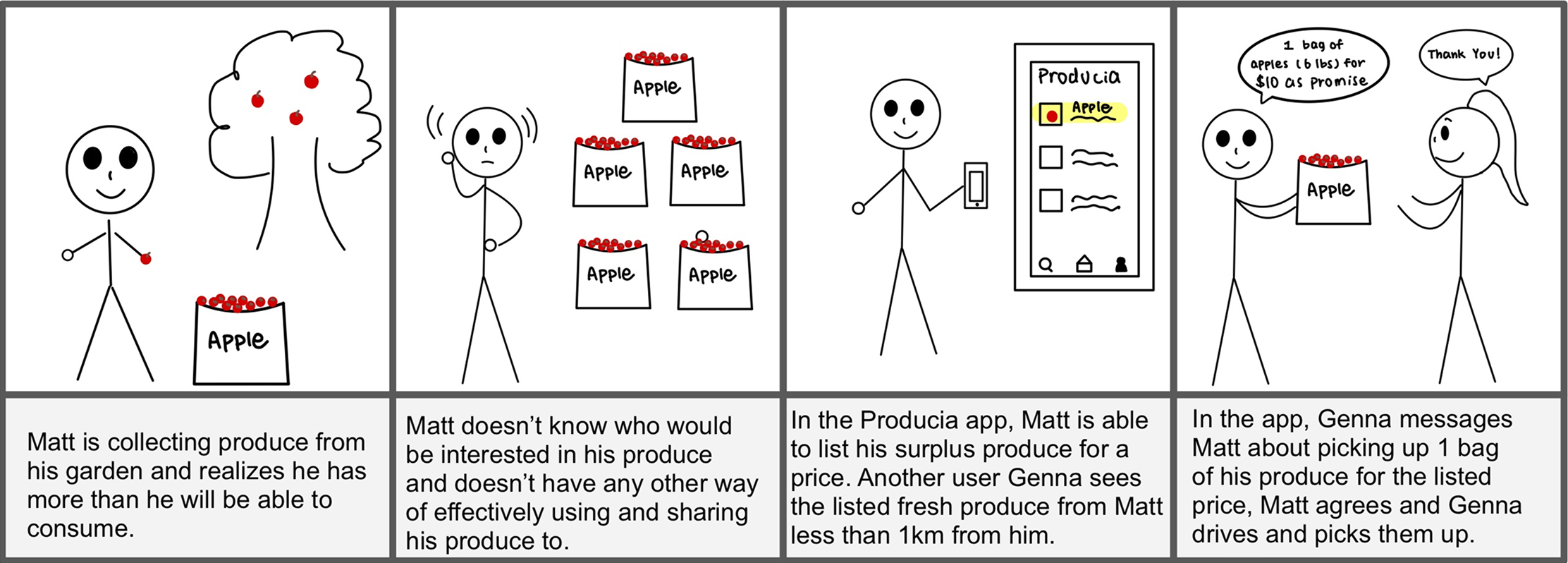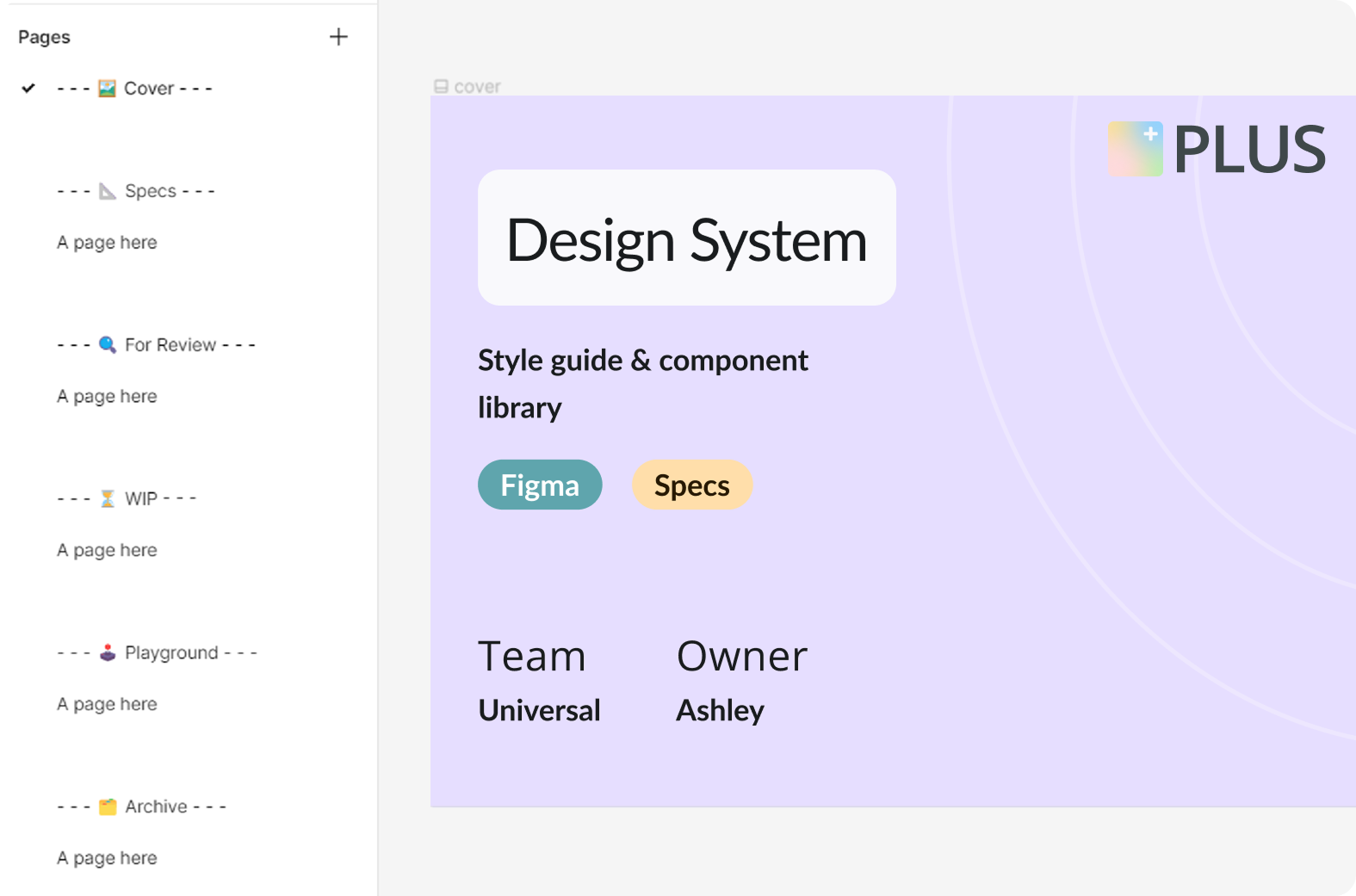Context
What is PLUS?
PLUS, where I interned as a product designer, is a tutoring platform that connects human tutors with AI-driven software to boost learning gains for middle school students from historically underserved communities. The platform currently supports over 3000 students, 500 tutors, completing more than 10k hours of tutoring every month.
Research
Initial Research
We began with some exploratory qualitative research into this problem space. We wanted to understand about people's experiences with sharing, buying and selling produce.

Competitive Analysis
Affinity Diagram
We interviewed participants and captured detailed notes about their experiences with gardening, produce sharing, and sustainability. Using affinity diagramming, we:
- Transferred our notes onto digital sticky notes
- Grouped similar insights together
- Identified emerging themes and user priorities
Insights
After reviewing our affinity diagram, we noted some of the major findings we gathered about this new problem space.
......
Other key takeaways from the interview include:
● Our users desire a way of connecting with others in their community through sharing/selling produce with others
● Our users desire a safe and secure platform that is transparent with how the produce was grown and if there was pesticide usage
● Our users desire a user interface that displays nearby produce/ individuals looking for specific items
● This application has the potential to increase and foster community
● This application has the power to increase sustainable practices and limit food wastage ( which is also a desire and goal of our users!)
Synthesis & Ideation
Persona

Storyboard


User Flows
In order to gain a more comprehensive understanding of our users' experience, we created user flow diagrams. These diagrams serve as visual representations that outline the step-by-step journey users undertake when interacting with our product. We focused on 2 key areas: The 'Add Listing' flow and the 'Searching Produce Item + Message Seller' flow. By mapping out these processes, we aimed to uncover insights into the user's journey, ensuring a thorough understanding of their experience from initiation to completion.
Low-Fi Prototypes
Wireframe Sketches
After we decided the main flow and overall structure of the website, we divided the experience into two major sections based on the user flows. Each member took on one part of the process and created a set of wireframes. Below are the wireframes I created for the Survey portion and saving to favorites during the Matching stage.
.jpeg)
.jpeg)
Paper Prototypes
We then created paper prototypes based on our wireframe sketches to simulate the on-screen interactions. The prototypes then are used for think aloud user testing. This allowed us to rapidly iterate, and gather early user feedback. Below is the paper prototype for "Listing a produce" and "Searching with Filter".
.jpeg)
Think Aloud Testing
During testing sessions, we presented the different paper prototype flows to participants and asked them to “think out loud” as they interacted with each screen. We wanted to understand these main questions:
- Whether the overall flow makes sense
- Out of the current flows, where are some areas of innovation that we should pivot to
- For the matching process: what are people’s preferences on the default view (card vs grid) on different devices
We compiled our recorded interview notes and found the following insights:
USER TESTING
UF1: User Flow for Listing a Produce Item:
Commonalities:
- Both tech-savvy and less tech-savvy users found the initial steps of listing a produce item straightforward.
- Clear labels and an intuitive interface were appreciated by both user groups.
- Moderately tech-savvy users had no significant issues and completed the task successfully.
Key Findings:
- Some aspects of the listing process, particularly photo cropping, were still confusing.
- Struggles were observed in understanding and using certain features like location filters.
- Potential pain points include difficulties with image manipulation and complex filters.
Potential Solutions:
- Provide more user guidance or tooltips for actions like photo cropping
- Simplify or make advanced features like location filters optional
- Continue to improve the user experience for individuals with limited tech proficiency.
UF2: User Flow for Searching with Filters: Commonalities:
- Both user groups, including tech-savvy graduate students and less tech-savvy users, found the filter system to be user-friendly and effective.
- The user flow for filtering by category, price, and location seemed straightforward for both groups.
Key Findings - Pain Points:
- Less tech-savvy users may struggle with understanding whether their selected filters are active (also may be fault of paper prototype due to its limitations)
- A lack of clear feedback regarding active filters could lead to potential frustrations.
Potential Solutions:
- Provide clear feedback to users about the status of their selected filters.
- Consider adding visual cues or indicators to confirm filter application.
Notes from User Testing:
User testing (User 1) feedback #1: “I am a little bit confused about the adding list icon is used for when I first saw it. Is it designed for the buyer to add the list they wanna buy, or is it designed for the seller to add the list they wanna sell?
User testing (User 1) feedback #2: “When I am filling out the pickup times, I would rather not type in the date, I would rather select it if possible.”
User testing (User 1) feedback #1: “When I went to type in something, the keyboard covered the selection and I couldn’t see it.
User testing (User 2) feedback #2: “I wish I also could have modified the location”
User testing (User 2) feedback #2: “I am not sure who I am messaging in the messenger area.”
User testing (User 3) feedback #1: “Where did my quantity of bananas go.”
User testing (User 3) feedback #2: “I am confused why there's a keyboard now? Also, will i get an email or something to confirm?”
User testing (User 3) feedback #3: “I am confused by when I clicked on the filters button and it showed me the map, was this on purpose”
User testing (User 3) feedback #4: “Are these sliders supposed to move”
Desired Potential Changes:
- Pick up time input to be changed from text input to a slider input
- Change buttons to be consistent with user input throughout flow
- In flow 2 change flow of occurrence of keyboard
- In flow 2 change filters button to display filters and the map button to display map
- Confirm keyboard does not block input field when user is inputting information
- Explain add listing with a tooltip (how to use, what it’s for)
Mid-Fi Prototypes
.png)
